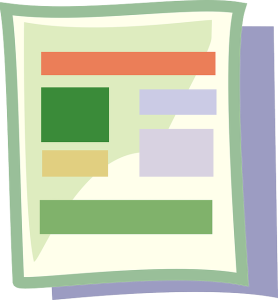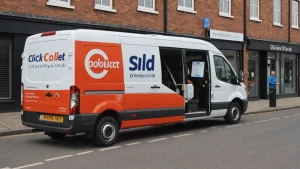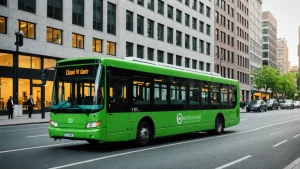Print advertising has never lost its power. A well-designed business flyer not only grabs attention but also remains eye-catching in 2025, bringing customers through doors. While digital ads flash by in seconds, physical flyers stay—on desks, bulletin boards, and in hands. Flyers can also serve as design-ready tools for businesses to boost their visibility.
This isn’t just about paper and ink; it’s about psychology and human behavior. Flyers, like brochures, work when they are thoughtfully designed and well-targeted. Successful flyers balance clear messages, smart design, and strategic distribution, tailored to your company’s unique goals.
Value of Promotional Flyers
Recent data from the Data and Marketing Association shows that 79% of people read or scan promotional flyers they receive. More striking: 45% keep these flyers for future reference.
In 2025, effective flyers blend traditional appeal with modern technology. They allow you to customize your message, include QR codes and augmented reality, and leverage targeted distribution to reach both digital natives and traditional customers. Additionally, carefully considering specifications such as size, layout, and material can make your flyers more impactful.
This guide shows you exactly how to create flyers that attract customers. From understanding the psychology behind eye-catching designs to exploring advanced distribution strategies, we’ll cover it all. Whether you’re launching a new campaign or revamping your materials, it’s time to start creating flyers that deliver results.
Businesses that master flyer marketing gain an edge, connecting with customers in ways digital-only campaigns can’t. Let’s explore how to make your flyers impossible to ignore and stand out in any setting.
Step 1: Create Engaging Content with Business Flyers
Flyers grab attention when they speak to your audience, either to promote an upcoming event or a special offer.
Clear messages and designs leave a lasting impression.
Calls to action drive customer engagement.
Craft a Clear and Compelling Message
Strong messaging is key to attracting customers with flyers. Start with a headline that immediately grabs attention and features your company name or logo. Use words that address the audience’s needs, whether you’re advertising car magnets, greeting cards, or other products. A bold and direct headline acts as a hook, encouraging readers to explore more.
Keep the message concise and focused. Avoid overwhelming the flyer with too much information; stick to essentials like flyer sizes, pricing, or key benefits. Bullet points work well to break down details, such as low prices or shipping rates, ensuring easy readability. Photo effects and visuals can further enhance clarity and appeal.
Design Custom Flyers with the Target Audience in Mind
Your flyer design should reflect your audience’s preferences and values. For example, a modern layout might resonate with tech-savvy young professionals, while a classic design could better appeal to older customers. Whether you’re advertising with durable material for outdoor distribution or a sleek design for a corporate audience, tailor every detail to your goals.
Visuals play a huge role. Include high-quality images or graphics, such as your design or customer-centric visuals. When done correctly, this creates a connection with the audience, helping them relate to your products or services. Pair visuals with clear calls to action, ensuring readers are guided toward specific next steps.
Using Colors and Fonts Effectively in Custom Flyer Printing
Colors and fonts should align with your branding and goals. For instance, bold colors like red can highlight urgency, while cool tones like blue can convey professionalism. Fonts should be readable but also match the tone of your message. A professional design should avoid overly decorative fonts that distract from the main content
Snap Judgments
The study found that up to 90% of snap judgments made about products can be based on color alone.
Include a Strong Call-to-Action
Every flyer needs a clear call-to-action (CTA). Whether encouraging readers to request a production time estimate or offering details for an online shipping quote, a strong CTA motivates customers to act. For example, phrases like “Order your car magnets today!” or “Contact us now for a custom quote!” are effective ways to drive action.
Make it easy for customers to follow through by including clear instructions, like scanning a QR code or calling for same- or next-business-day delivery. Highlight any standout features, such as low prices or fast service, to increase engagement.
These steps answer the question “How do flyers attract customers?” by emphasizing clear messaging, targeted design, and action-driven content. Flyers are effective promotional tools because they directly engage the customer, making it personal and tactile. The message, backed by powerful visuals and a strong CTA, is what makes a flyer truly attractive. For those seeking a streamlined approach, utilizing tailored business flyer templates can greatly simplify the design process. These templates offer pre-designed layouts that can be customized to highlight key features, making it easier to create eye-catching campaigns. Explore the potential of these templates to elevate your marketing efforts and ensure consistency across your materials. Learn more about how to effectively leverage business flyer templates for impactful campaigns [here](https://example.com/how-to-use-business-flyer-templates).
Response Rate Statistics
General Response Rate: Flyers typically achieve a response rate of 3.5% according to the Pfeiffer Report. This means that for every 1,000 flyers distributed, about 35 people will respond to the offer.
Direct Mail Comparison: Direct mail, which includes flyers, has an average response rate of 5.3%, significantly higher than the 0.6% response rate for email marketing.

With Metrobi, you can save 23% on delivery costs.
Metrobi provides you with a competitive driver pool, a dedicated operations manager, and included delivery management software. We decrease your overall costs by 23%.
Step 2: Choose Innovative Flyer Design Trends
Simple designs remove clutter and focus attention.
Interactive features engage and connect with audiences.
Keep the experience fresh to stand out from competitors.
1. Utilize Minimalistic Designs
Minimalism in design isn’t just about cutting things out; it’s about focusing on the essentials. It helps convey messages clearly without overcrowding the flyer. A clutter-free design naturally attracts the viewer’s eye to the important details, like your message or contact information. The key is to use clean lines and plenty of white space.
Choosing a neutral color palette can complement minimalistic designs while maintaining brand identity. Neutral tones combined with a splash of brand color highlight key elements without overwhelming the viewer. Typography also plays a critical role here. Opt for clear and legible typefaces that enhance readability.
Interestingly, minimalistic designs also portray elegance and sophistication. This trend is particularly effective in high-end markets where simplicity can suggest luxury or exclusivity. For example, Apple’s advertising often employs minimalism to emphasize product sophistication.
A Consumer Preference
A 2023 survey by Adobe found that 63% of consumers prefer brands that incorporate minimalist design elements.
2. Incorporate Interactive Elements
Adding interactive elements to flyers turns a static piece into an engaging tool. QR codes are a simple yet effective way to bridge offline and online experiences. They can direct potential customers to websites, video content, or special offers, providing additional information beyond what’s on the flyer.
AR, or Augmented Reality, takes interaction further by superimposing digital content onto the physical world through a device camera. This tech offers rich experiences, like demonstrations of products right on the flyer. Pizza Hut used AR to turn their boxes into Pac-Man games, creating memorable experiences that boosted brand interaction.
Interaction not only captivates interest but also gathers data on consumer behavior. By tracking how and when QR codes are scanned, marketers gain insights into engagement levels and can refine strategies accordingly.
Both minimalistic design and interactivity redefine flyer campaigns. They simplify communication and offer memorable experiences, aligning with modern consumer expectations. Staying abreast of innovations not only maintains relevance but also propels businesses to the forefront of competition. As with any trend, the key is to find a balance that aligns with brand values and customer expectations.
Step 3: Implement Effective Flyer Distribution Techniques
Focus your efforts on the right locations and times.
Know when and where to distribute for the best results.
Flyers reach more people when aimed and timed right.
1. Target High Traffic Areas
Finding the spots with lots of foot traffic is key to catching the most eyes with your flyers. You have to think like your audience. Where do they go? Are they at a coffee shop, a mall, or maybe a train station? Picking the right place is half the battle.
To make it more effective, start by gathering data. Look into where your customers are likely to be on weekdays versus weekends. Check out busy streets, local events, and community spaces. For example, if you are selling fitness gear, placing flyers at gyms or sports events would make sense. Use community boards in popular locations as these are often free and come with high visibility.
After choosing these spots, have the right permission to distribute or place flyers there. Talk to business owners or site managers to ensure you are following local guidelines. Once you have identified the best places, the groundwork for an impactful flyer campaign is set.

Understanding Local Regulations
Before you start, know the rules. Some areas might require permits, while others might allow only certain types of promotional material. Ignoring this can lead to fines or wasted efforts if your flyers are removed. Check with local authorities to know what’s allowed. Having permission gives you peace of mind and ensures your campaign runs smoothly.
2. Schedule Distribution Timing Strategically
Timing is everything. A flyer handed out during a lunch rush at a business district gets more attention than one handed out at 3 PM. To make your flyer campaign successful, align distribution with relevant events or peak hours.
Consider events that attract your target audience. If you are advertising for a new eatery, distribute flyers during local food festivals or markets. Big local events, like fairs, art shows, or sporting events, provide great opportunities. Distribute flyers when people are more receptive. Early morning commuters might not stop, but those heading home may be more inclined to take a look.
Another trick is to adjust for the weekday and weekend differences. Weekends might have more relaxed timings while weekdays can offer a more consistent flow, especially if targeting business districts. Tailor your distribution plan based on these insights.

Optimizing Timing with Nearby Businesses
Talk to local business owners about their busiest times. This can give valuable insights into when to distribute your flyers. Aligning your distribution with busy retail hours could amplify results, as people are more likely to notice and respond during peak traffic times.
How Effective is Flyer Distribution?
People often ask, “Is this even worth it?” The short answer is yes. Distributing flyers can be cost-effective and impactful when done right. Studies show that a well-placed flyer can prompt a 4-5% response rate. This makes it a viable method alongside digital marketing efforts.
Success largely depends on quality and approach. For door-to-door flyers, success rates can also be consistent if the content is relevant to household needs. Flyers become especially powerful when aligned with local events or distributed in areas relevant to your audience. However, remember they work best when part of a bigger strategy. Pairing with social media or email marketing can amplify the overall impact and provide measurable results.
Additional Insights
Retention of Information: Flyers are retained for an average of 17 days, keeping the message fresh in consumers' minds longer than many digital advertisements.
Purchase Influence: About 54% of consumers report being more likely to purchase a product after receiving a flyer, showcasing their potential to influence buying decisions.
Immediate Action: Approximately 63% of Millennials who respond to a flyer make a purchase within a week, indicating that flyers can drive quick consumer action.
Advanced Tips for Boosting Flyer Campaigns
Digital flyers broaden audience reach.
Analytics enhance campaign tracking and refinement.
Additional Advice or Alternative Methods for Your Business Flyer Template
Explore Digital Flyer Options to Expand Reach
Digital flyers offer an innovative way to complement traditional print campaigns and broaden audience reach. They are particularly effective when paired with targeted promotion strategies across social media or email marketing platforms. Businesses can upload digital designs in PDF download formats or interactive versions that link directly to promotions. For example, using social media ads ensures your flyer reaches specific demographics that align with your campaign goals.
When designing digital flyers, remember to account for elements like coating options and bleed size for consistency between print and digital versions. Additionally, ensure your artwork and layout are optimized for multiple formats, including 8.5 x 11 flyers. Platforms offering analytics for digital engagement make tracking success easier, especially when using tools like an online calculator to estimate ROI.
Use Analytics to Track Flyer Effectiveness
Integrating analytics into your flyer campaigns sharpens your marketing approach. QR codes, URL tracking, or direct downloads provide actionable data about who interacts with your flyers. This information helps refine future campaigns by understanding which artwork designs or messages resonate most.
For example, embedding QR codes that lead to your online calculator or product pages ensures seamless engagement. Combine this with Google Analytics to track how potential customers interact with the flyer’s online components. Data on click-through rates, promotion effectiveness, and download activity can reveal which campaigns yield the best results.
Utilizing this data-driven strategy allows businesses to make informed adjustments, ensuring maximum reach and customer conversion. For greater efficiency, focus on producing wear-resistant flyers with shrink wrapping for distribution at high-traffic locations, reinforcing your investment in physical marketing.
Common Pitfalls and How to Avoid Them
Avoid Overloading Flyers with Text and Images
Simplicity is key to a flyer’s success. Overloading your design with excessive text or visuals can dilute your message and overwhelm your audience. Instead, prioritize customizable features that showcase your company name, photo effects, and essential details like shipping rates or production time. A clean layout allows customers to focus on your primary call-to-action.
For best results, ensure your flyer’s bleed size is set correctly, and the design incorporates subtle coating options for a polished, professional appearance. The right balance of visuals and concise language will make your flyers more impactful and memorable.
Regularly Update Design to Prevent Stagnation
Static designs become stale over time, harming brand perception. Updating flyer designs to reflect current trends or seasonal themes keeps them fresh and engaging. This practice helps maintain relevance and can re-engage past audiences. Design updates should also reflect any changes in branding or strategic direction to ensure consistency. For inspiration and techniques on staying current, refer to design-oriented publications like “Graphic Design School” by David Dabner et al., which provides comprehensive insights into evolving design principles.
In practice, regularly revising your flyer design can be the difference between a stagnant and a dynamic campaign strategy. More so, keeping pace with competitors requires continual innovation and adaptation, which these design updates enable. To simplify the creation process, exploring flyer maker tools can be helpful. These tools allow anyone, regardless of design experience, to create stunning flyers easily and quickly. For more inspiration and options on tools that can streamline your flyer creation, check out this detailed guide on flyer maker tools.
Understanding the Psychology of Color in Advertising
The Role of Color in First Impressions
1. Choose Colors that Encourage Action
Selecting the right colors can lead to notable results. For instance, color influences up to 85% of customers’ purchasing decisions. Red, for example, triggers urgency and excitement, making it suitable for limited-time offers or discounts. It’s often used in the fast-food industry to boost appetite. In contrast, blue brings calm, serenity, and trust. Many financial institutions use blue to convey reliability and stability. When picking colors, always consider cultural differences. Red can signify luck in China, but danger in Western cultures. While the psychology of color has universal elements, tailoring your choices to specific audiences can increase the effectiveness of your flyers.
Suggested reads on this topic include “The Secret Language of Color” by Joann Eckstut and “Color Psychology” by Angela Wright. These texts provide insights into strategic color use in marketing and can help deepen your understanding beyond superficial color codes.
2. Balance Color for Better Readability
The key to a successful flyer is ensuring readability. Combining colors effectively enhances legibility and message retention. A good rule is to maintain a solid contrast, which keeps text readable against its background. The World Wide Web Consortium recommends a minimum contrast ratio of 4.5:1 for standard text, which can be a useful benchmark for flyer design. Beyond contrast, limit your palette to three or four colors. Having too many colors can lead to a chaotic design, overshadowing your main message. A consistent palette can aid brand identity.
For those keen on mastering color palette design, “Interaction of Color” by Josef Albers is essential. It explores color as a medium of communication and offers practical exercises.
3. Incorporate Emotional Triggers Through Color
Colors speak to the emotions. They convey feelings that can align with your brand’s message. Yellow, for example, evokes happiness and warmth, making it ideal for family-friendly flyers. Purple is associated with luxury and creativity, often used in beauty and high-end products. Consider not just the broader implications of color but how different hues and shades within these broad categories can convey varying emotions and messages. A deeper knowledge of color theory can significantly boost the emotional impact of your flyer designs.
Consumer Recall
A study found that 81% of consumers are more likely to recall a brand's color than its name, further emphasizing the impact of visual branding on consumer recognition and choice.
Articles from experts like “Color and Emotion: What Your Business Colors Say to Customers” by the American Marketing Association delve into these subtleties and are valuable for those serious about refining their marketing strategies with color.
4. Understand Color Blindness and Accessibility
Approximately 8% of men and 0.5% of women are colorblind. This can affect how your flyers are perceived. Ensuring your materials are accessible to colorblind individuals not only broadens your reach but also demonstrates inclusivity. Use tools to test your designs for colorblind accessibility, ensuring that no critical information is conveyed using color alone. The contrast is especially crucial here. For large-scale text, contrast should meet the 3:1 ratio.
Books like “Designing for Accessibility: A Business Guide to Inclusion” offer practical advice on adapting marketing materials for all audiences. Incorporating these principles from the outset can enhance the overall effectiveness and inclusivity of your campaigns.
5. Analyze the Impact of Color in Flyer Campaigns
The effectiveness of color in marketing is well-documented. Tracking the success of your flyers by analyzing customer engagement metrics—such as time spent looking at the flyer or response rates—can help draw connections between specific color choices and consumer behavior. This understanding enables businesses to refine their color strategies over time.
Increased Readership and Recall Rates
Advertisements in color are read up to 42% more often than their black-and-white counterparts, and vibrant, carefully chosen colors can significantly enhance engagement and brand recall up to a 33% increase.
Books like “Predictably Irrational” by Dan Ariely provide a deep dive into consumer behavior psychology, which pairs well with understanding the broader impact of color on marketing effectiveness.
Measuring Flyer Campaign Success
Assess how your flyer strategies translate into sales.
Understand customer reactions to improve future campaigns.
Adapt your plans based on real-world outcomes.
Impact on Foot Traffic
Data and Marketing Association found that 48% of consumers visit the advertised shop or seek more information after receiving a flyer.
Analyze Performance Metrics
Understanding how your flyer campaign performs starts with a careful analysis of key metrics. Knowing these numbers helps you see the effectiveness of your efforts. Here’s your step-by-step guide.
-
Track Distribution Against Sales or Foot Traffic:
Collect precise figures on the number of flyers distributed. This baseline helps compare and contrast with sales data. Monitor sales numbers and foot traffic when the flyer is in effect. Tie increases in these areas to your flyer campaign. For example, check for spikes in your sales data post-distribution. Use software like point-of-sale systems to get weekly sales reports. Make sure you photograph the placed flyers to confirm placement consistency. -
Use Customer Feedback to Measure Engagement:
Direct feedback offers insights not visible in raw numbers. Set up surveys or feedback forms asking about flyer content and design. You can implement QR-coded questions making it easy for customers to respond quickly. Focus on questions that gauge interest and understanding of your message. Use insights to refine future designs. For instance, was the call-to-action clear, or was the design too cluttered? Gather feedback through emails or in-store consoles where possible.
Gathering and Reviewing the Data
Once you have your data, know how to review it effectively.
-
Create a Centralized Data System: Use a spreadsheet or database to log all metrics. Consider Google Sheets for real-time collaboration with your team.
-
Identify Trends and Patterns: Look for consistent upticks in sales related to flyer campaigns. Spot patterns in feedback about specific design elements.
-
Visualize the Data: Use graphs or charts for easier data interpretation. For example, a bar graph of sales increases before and after flyer distribution can make trends clearer.
Adjust Strategies Based on Results
After analyzing your flyer campaign’s performance metrics, it’s time to fine-tune your approach. Changes should be data-driven for more effective future campaigns.
-
Refine Your Target Audience Based on Data:
Gather demographic data from purchases or foot traffic. Determine which demographic segments responded best to your campaign. If data shows a certain age group was most engaged, consider focusing on them in future distributions. Adjust targeting strategies to align more closely with these insights. For example, choose locations frequented by these demographics, such as cafes for young adults or business parks for professionals. -
Modify Flyer Messaging and Design as Needed:
Based on feedback and data, adjust the messaging if it isn’t clear or engaging. Experiment with different headings or calls to action. Consider visual design feedback—was the font readable? Were colors effective? Test different designs with small focus groups before the next large rollout. Use graphic software to create design variations, utilizing feedback effectively.
Embedding these steps into your flyer campaign routine can continually optimize your impacts. Regular adjustments lead to more precise targeting, helping to increase overall campaign effectiveness.
Further Resources and Reading
-
The advanced print design elevates flyer effectiveness.
-
Case studies reveal practical campaign strategies.
-
Flyers bridge digital gaps with real-world customers.
Related Topics or Advanced Guides
Advanced graphic design pushes the boundaries of traditional flyers. When imagery and text engage seamlessly, the message resonates strongly. Delving into advanced design techniques, like grid systems and typographic hierarchy, allows for the clarity and emphasis of a message. The use of imagery and negative space can guide the reader’s eye to crucial elements. For those eager to refine their skills, read “Graphic Design Theory: Readings from the Field” by Helen Armstrong. It provides insights into the evolution and philosophy behind graphic design.
Studying real-world campaigns can offer substantial insights. Dive into examples like Airbnb’s creative flyers that integrate local culture. These successfully capture the attention of their audience. These case studies highlight strategic choices in design and distribution. They help in understanding what works and why. Additionally, consider the lessons from non-profit campaigns, which often rely on persuasive flyers to evoke emotional responses.
Why Business Flyers Are Essential
Flyers provide a direct and tangible connection. Unlike digital ads that might get lost in a sea of information, a well-crafted flyer stands out. It’s memorable because it engages multiple senses. Studies show that people often trust print more due to its physical nature. It allows for a more focused consumption without digital distractions.
From a cost perspective, flyers can be quite affordable. Particularly when you consider their returns in terms of foot traffic and sales upticks. The direct costs can be lower than complex digital campaigns, with printing and distribution being the main expenses. This makes them a viable option for both small businesses and large corporations. It’s not just about the cost; it’s about the effectiveness. Marketers often find that when combined with a digital strategy, they amplify brand presence effectively.
Return on Investment (ROI) Statistics
Average ROI: Flyer marketing boasts an average ROI of approximately 29%, demonstrating its effectiveness in generating revenue relative to the cost of distribution.
Cost-Effectiveness: The cost per thousand (CPM) for flyer distribution can be as low as $0.30, making it one of the most affordable advertising methods available.
For those skeptical about the relevance of flyers in a digital age, consider psychological research. It shows tangible items often evoke a stronger emotional response than digital content. Books like “The Experience Economy” by Bernd Schmitt can shed light on why physical experiences in marketing are significant. This not only covers flyers but all tangible marketing assets.
Expanding Your Knowledge
For professionals eager to expand their marketing arsenal, exploring marketing psychology is invaluable. Understanding how color, imagery, and language influence decisions can transform your strategy. The book “Influence: The Psychology of Persuasion” by Robert Cialdini is another recommended read. It’s a foundational text that explores why people say “yes” and how to apply these concepts effectively in campaigns.
If you wish to delve into the digital counterpart of print, it’s worth exploring resources like Coursera’s “Digital Marketing Specialization.” This course covers how digital tactics complement and enhance traditional marketing methods. Flying campaigns that marry both realms find greater success. Understanding analytics and customer feedback helps refine these combined efforts.
There are trade-offs with flyers compared to digital media. While they offer tangible connections, tracking can be complex. However, digital tools, like QR codes, can bridge this gap by providing measurable insights. Understanding both perspectives helps in crafting a balanced marketing strategy that leverages the strengths of both worlds.
For continued learning, seek out marketing blogs and journals that discuss evolving print technologies and consumer behavior trends. Engaging with these resources ensures you remain at the forefront of both traditional and modern marketing practices.
Conclusion
Business flyers, such as 8.5 x 11 designs, remain a strong marketing tool in 2025 because they create real connections with customers. You now have the skills to create flyers that grab attention and turn interest into sales using tools like an online design tool or a blank template. Including personal touches, such as your own photos of your business, can make a big difference in standing out.
Success with flyers comes from mixing basic principles with new technology. Clean designs, smart color choices, and clear messages form the base. Using paper stock options enhances the professional feel, while QR codes and augmented reality add modern appeal. But the core goal stays the same: speak directly to your customer’s needs. When in doubt, please contact customer service for assistance.
The best flyers do more than share information—they start conversations. Whether promoting a service or an event, placing them in high-traffic areas at the right time increases your chances of reaching people who need your products or services. Highlighting unique selling points, like an exclusive online shipping quote, can also catch attention. For inspiration, think of them as a magazine page meant to showcase your business.
Remember to check how well your flyers work. Track your results, listen to customer feedback, and adjust your approach. This helps you make each campaign better than the last. If you have questions about improving flyer performance, don’t hesitate to contact customer service.
Start with one technique from this guide. Test it, measure the results, and build from there. Print flyers are effective because they give customers something real to hold—a physical reminder of your business. When done right, flyers turn prospects into loyal customers who keep coming back.

























